Top 11 Famous Pagodas in China
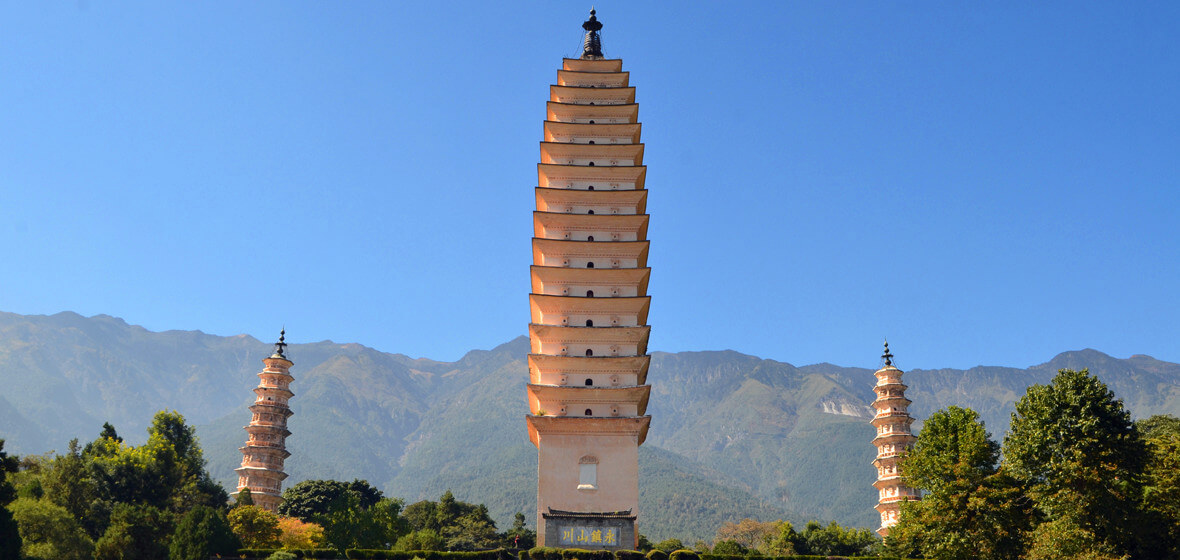
To save one person’s life is better than building a seven-story pagoda.
--Chinese Proverb
The Pagoda, a tower-like structure made of stone, brick, wood, or even porcelain, is usually the center of a Buddhist temple complex. They are descended from stupas, which are ancient Indian buildings, and the purposes of the two structures are similar. Whereas stupas were designed to house bodies or relics related to prominent religious and historical individuals, the intent of pagodas is to store religious talismans and other sacred objects. In dynastic China, it is a huge project to build a pagoda; temples encouraged donors to accumulate merit by donating money to get their name written on the pagoda.
The first pagoda appeared in China in 68 CE and was built by Emperor Ming to spread the Buddha's teachings. It was situated within the White Horse Temple as one of many buildings that served the needs of the resident monks. From the 17th to the 19th century, the most famous pagoda in China was the Glazed Pagoda in Grand Baoen Temple in Nanjing, or better known in the western world as the Porcelain Pagoda of Nanjing. It was constructed by the Ming Dynasty during the early 15th century. The pagoda was 79 meters (259.19 ft.) high, with an octagonal base 30 meters (98.43 ft.) in diameter. The Porcelain Pagoda derived its name from the fact that its walls were made using white porcelain bricks. During the day, the rays of the sun would be reflected off the bricks, causing the pagoda to glitter. At night, 146 porcelain lanterns would be lit so as to illuminate the pagoda. Unfortunately, it was destroyed by the Taiping rebels in 1856. But there are many other beautiful pagodas in China which you can still visit today, and we have listed the top 11 of them below. There is a Pagoda park in Wuhan in central China’s Hubei Province; you can see most of the imitations of the famous pagodas in China there.
1. Big Wild Goose Pagoda
- Location: Xi’an
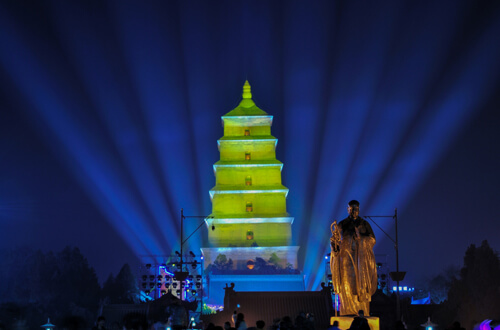
The Big Wild Goose Pagoda is located in the Ci'en (Temple of Mercy) in the southern suburb of Xi'an City. The Big Wild Goose Pagoda is one of the best examples of a Tang-Style pagoda; it is square rather than round. It is 64 meters (209.9ft) tall with seven stories of side length carrying 25 meters (82ft), and it is also decorated with specially designed spiral staircases and arch doors for four sides of the stories.
The pagoda was erected in 652 CE to commemorate the return of the temple’s abbot, the celebrated monk, Xuanzang. It was used to collect and preserve all the Buddhist materials from India by Xuanzang. It is said that Xuanzang brought back Buddhist relics (Sarira) and pattra-leaf scriptures (sutras written on the leaves of plants). Xuanzang’s travels inspired one of the best-known works of Chinese literature, Journey to the West.
The contemporary structure has been restored a number of times, although many of these restorations took place during the Tang, so overall the building remains essentially a Tang structure. Visitors can still climb the interior staircase to appreciate the surrounding view.
2. Yingxian Wooden Pagoda
- Location: Yingxian County, about 82 km from Datong
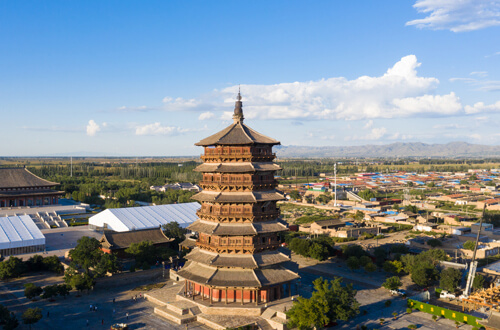
Dubbed as the world’s oldest and tallest wooden pagoda, Ying Xian Wooden Pagoda was built in 1056. Its real name is the Sakyamuni Pagoda of the Fogong Temple.
The pagoda is 67 meters (219.8 ft) tall. It takes the shape of an octagon in the plane with five stories and six eaves and is propped up by two circles of columns. An 11-metre-high (36 ft.) statue of Sakyamuni Buddha takes pole position at the centre of the first floor, with an ornate caisson directly above its head. Similar caissons bedeck the ceilings of every story in the pagoda and its walls are beautifully decorated with vibrant murals and vivid sculptures that all reflect the Liao Dynasty (907-1125) style.
3. Pagoda of Six Harmonies
- Location:Hangzhou
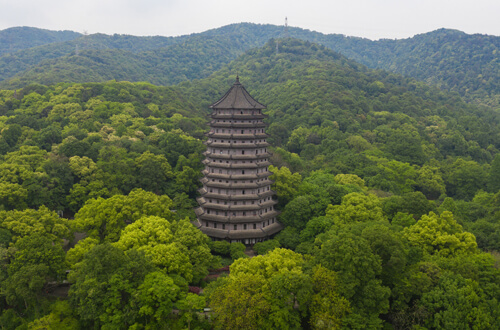
Liuhe Pagoda, or Six Harmonies Pagoda, stands on Yuelun Hill on the northern bank of the Qiantang River, around 6.5 km south of downtown Hangzhou. It was originally constructed in 970 CE, but it was destroyed and then rebuilt in 1165. Liuhe Pagoda’s name is related to the six Buddhist laws as well as the universe in traditional Chinese culture. It was thought this construction would calm the Qiantang River’s waves. The pagoda has a hexagonal shape with a height of around 60 meters (196.8 ft). In the exterior part, there is a harmonious shift of dark and light, achieved by the bright upper surface and the dark underneath part of the layers.
There is a spiral staircase that leads to the top floor. When you are going up the stairs, you will see painted and carved figures featuring characters, animals, birds, and flowers. In the past, the pagoda functioned as a lighthouse on the Qiantang River.
4. Songyue Pagoda
- Location:Dengfeng

The Songyue Temple Pagoda is located at the southern foot of Songshan Mountain, 12 kilometers southeast of Shaolin Temple. The pagoda was completed in 523 CE. It is 40 meters tall and the plane is in dodecagon with a circumference of 33 meters. The outer is divided into 15 layers with dense eaves, and the inner 10 layers. The pagoda is the only existing ancient pagoda with a dodecahedron. This pagoda is one of the few intact sixth-century pagodas in China and is also the earliest known Chinese brick pagoda. Most structures from that period were made of wood and have not survived, although ruins of rammed earth fortifications still exist.
5. The Iron Pagoda
- Location: Kaifeng

The Youguo (Blessing the Nation) Temple Pagoda, better known as the Iron Pagoda, is an octagonal structure that has 13 stories with a height of 55 meters (180.4 ft). It is also known as the “Iron Pagoda” as it is inlaid with brown-glazed bricks resembling the color of iron. It was commissioned in 1049 by Emperor Renzong of Song as a replacement for the first wooden pagoda which had been destroyed by fire after being struck by lightning. The Iron Pagoda was built with more than 50 different types of glazed copper-colored bricks that imitated the former wooden pagoda’s structure using the traditional method of dougong, or bracket set. Traditional dougong is a unique method of using interlocking wooden brackets to build eaves and create floors. The interlocking bricks are designed to fit together without the use of glue or fasteners.
6. Tiger Hill Pagoda
- Location: Suzhou
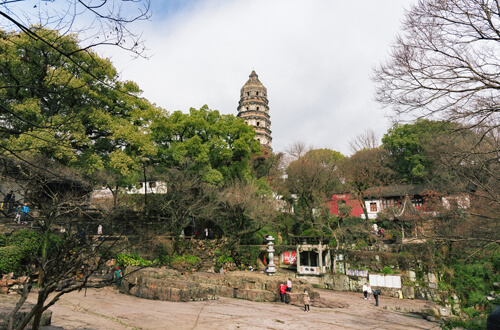
The Yunyan Pagoda stands on top of Tiger Hill, so it was also known as Tiger Hill Pagoda. It was completed in 961. The millennium old pagoda is also known as the Leaning Tower as it leans to the north by about 3.59 degrees. The octagonal pagoda is an imitation of a lofty wooden pavilion. It has seven stories and stands at a height of more than 48 meters (157.4 ft). The pagoda’s body is composed of three parts: the outer walls, the corridors, and a core structure. The pagoda is a fine example of the multi-story pagodas in the lower reaches of the Yangtze River during the late Tang Dynasty (618-907) and the Ten Kingdoms (907-960). It provides a precious opportunity for researchers to study the evolution of pavilion pagodas in that region. To protect the pagoda, visitors are not allowed to climb the pagoda.
7. Feihong Pagoda at the Guangsheng Temple
- Location:Hongtong County, Shanxi Province
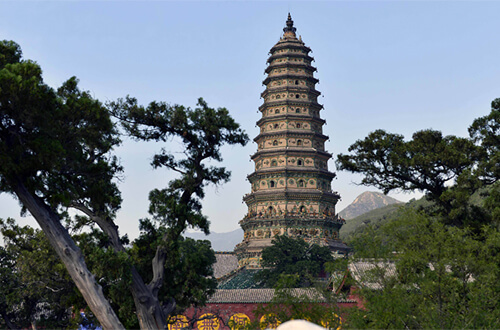
Feihong (Flying Rainbow) Pagoda is 47 meters (154 ft) tall; it is made of bricks and has 13 stories. The history of the pagoda can be traced back to 147 CE. Today's pagoda, made of glazed bricks and tiles, was reconstructed in 1527 during the Ming Dynasty; the roofed corridor on the ground floor was added in 1622. The building has remained unchanged since then.
It has an octagonal circumference with a hip-and-gabled roof. It presents a pyramid-like profile. Above the second floor, the pagoda is coated with engraved glazed tiles in the five colors of blue, green, yellow, white, and black. Glazed pottery Buddhist statues and architectural components imitating wooden structures decorate the pagoda from the third to the tenth stories. The exterior of the pagoda on the second floor and above is decorated with glazed imitation wood components. Under the eaves there are various decorations including carved panels and hanging lotus columns, as well as glazed pottery sculptures of buildings, Buddhist niches, flowers, animals, and figures, all creatively designed and delicately made.
8. The Qianxun Pagoda
- Location:Dali

Ask anyone what is the symbol of Dali, they will tell you it’s the three pagodas. Of all the three pagodas, the biggest one is called Qianxun Pagoda. It was built between 833 and 840, under the rule of the Nanzhao Kingdom (738-902) during the Tang Dynasty (618-907). The Qianxun Pagoda has 16 stories constructed from bricks with a square plan and multi layers of eaves. The main body presents a fusiform-like shape with a smooth profile, reflecting the typical architectural style of the Tang Dynasty. The two smaller pagodas next to it were completed from 1108 to 1172, the period of the rule of the Dali Kingdom. Designed in pyramid-like shapes, each of them has 10 stories with an octagonal plan and stands at a height of 42.19 meters (138.4 ft).
Decorative bracket sets, terraces, niches and Buddhist relief carvings of varied kinds adorn each floor of the two pagodas.
9. Bao'en Temple Pagoda
- Location:Suzhou
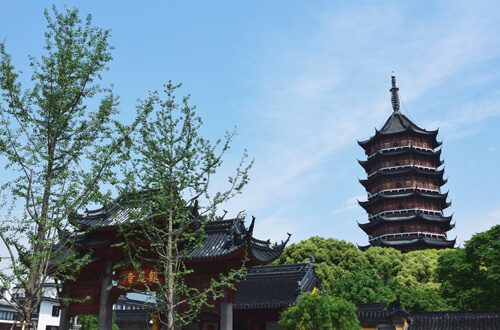
Bao’en Temple pagoda, also known as North Temple Pagoda, is 9 stories with a total height of 76 meters (249.3 ft). The pagoda is said to have first been constructed during the Three Kingdoms period by the order of Sun Quan, the king of Wu Kingdom (222-280), who prayed for the happiness of his mother. It was destroyed and rebuilt several times. The current pagoda is a rebuild on a design from the mid-12th Century. The octagonal, nine-story pagoda was built of brick and wood. The base and outside walls were made of brick, and the foundation and balustrades were made of stone. Each storey has encircling eaves, balconies and banisters, all made of wood.
10. Liaodi Pagoda of Kaiyuan Temple
- Location:Baoding, Hebei Province

The Liaodi Pagoda is located at Kaiyuan Temple in Dingzhou, Hebei Province. It is the tallest pre-modern Chinese pagoda that still exists today and is the tallest brick pagoda in the world.
Completed in 1055, it is 84 meters (276 ft) tall, with an octagonal base on a large platform. Besides its religious purpose as a Buddhist landmark, its great height gave it another valuable function, as a military watch tower that was used to observe movements of the Liao Dynasty enemy. Hence its name Liaodi Pagoda which means “the Pagoda for Forecasting Enemy's Intentions”.
11. The pagoda of the Tianning Temple
- Location:Beijing
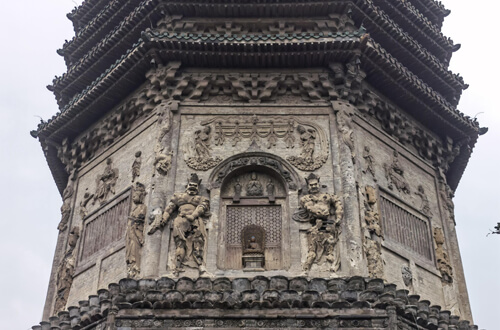
The Tianning Pagoda, located in the Tianning Temple of southwestern Beijing, is the oldest pagoda in Beijing area; it was built from around 1100 to 1120, during the later years of the Liao Dynasty (916-1125). The octagonal pagoda, 57.8 meters (189.6 ft) tall, was erected on a square platform. The bottom of the pagoda is in the form of a huge Sumeru (the central world-mountain in Buddhist cosmology) pedestal, decorated with carved arch patterns. At the corners there are relief sculptures of heavenly guardians accompanied by another level of carved arches. A veranda with banisters and brackets was built around the upper part of the pedestal.

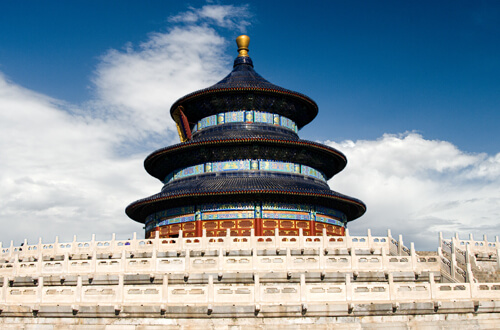 Temple of Heaven
Temple of Heaven 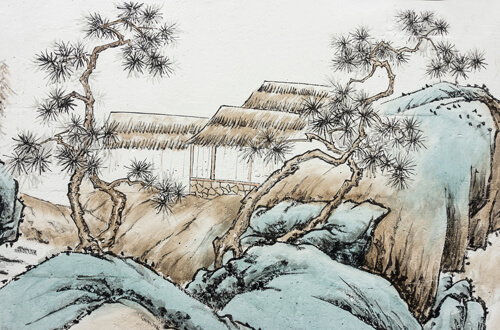 Chinese Painting
Chinese Painting  Chinese Calligraphy
Chinese Calligraphy  Beijing Opera
Beijing Opera